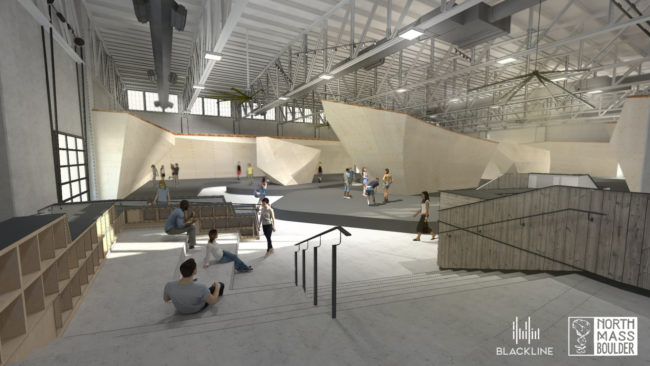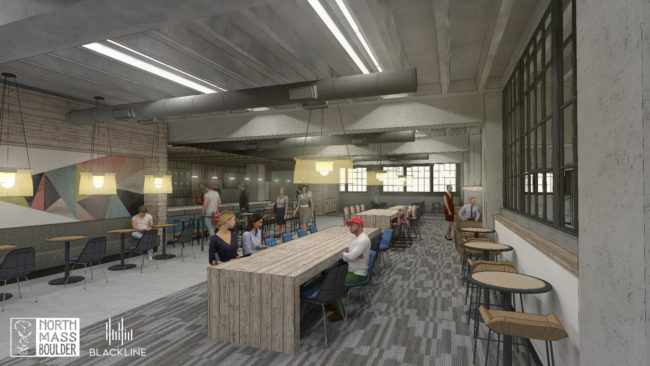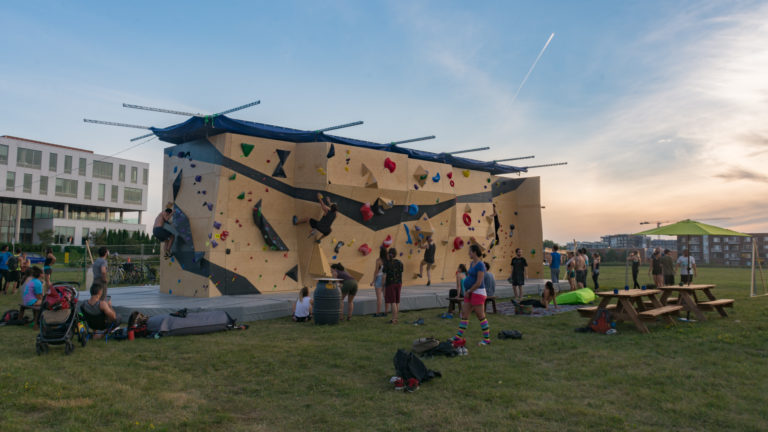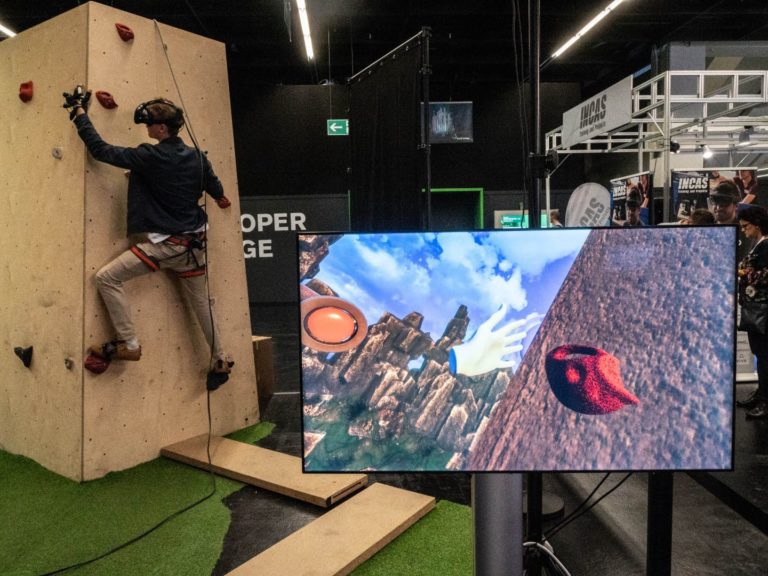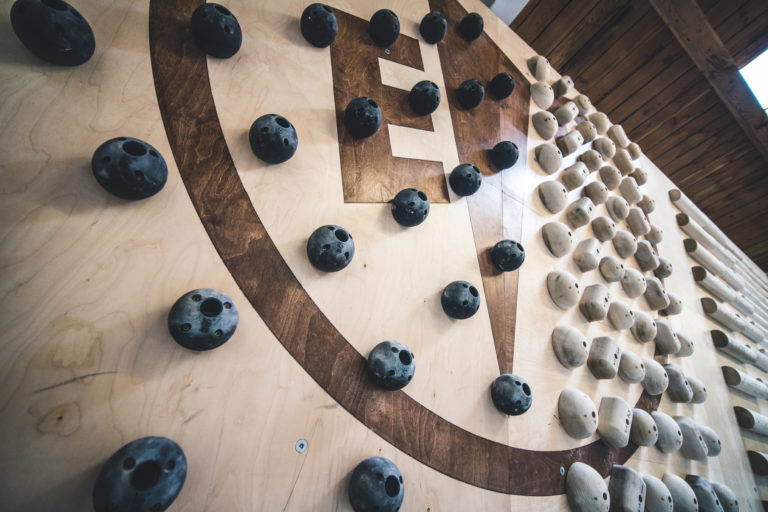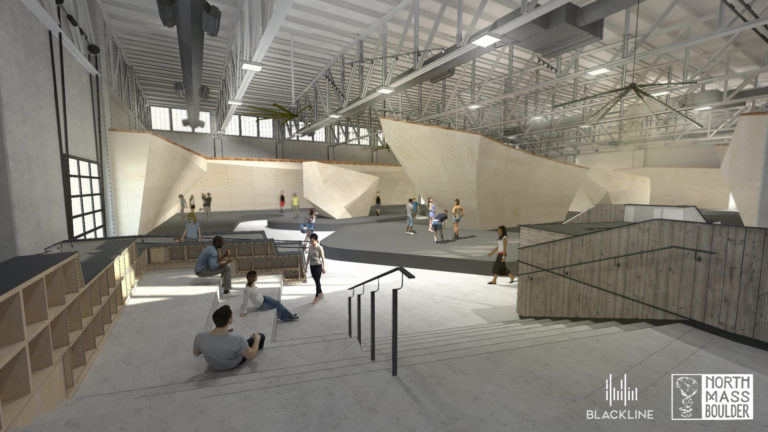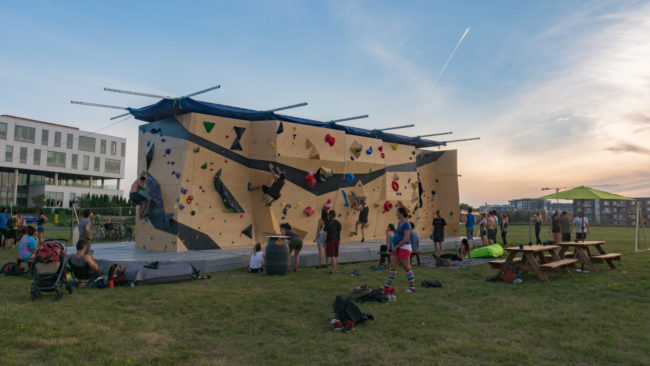
A Hip Take On Mobile Walls

Publisher Launches Gym Climber Magazine

VR Climbing Game in Your Gym
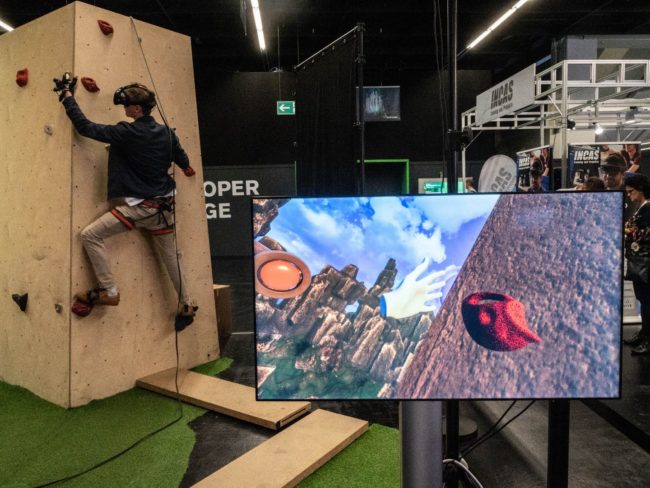
Climbing Gym Design Evolves
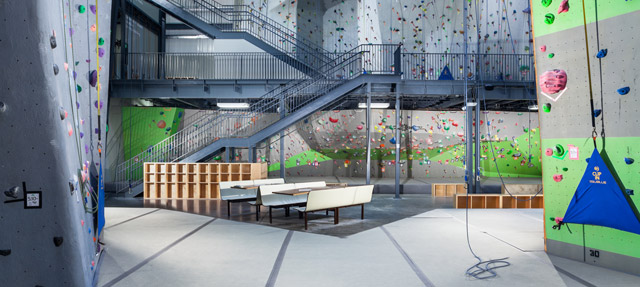 Climbing gyms are quite literally popping up all over the country — from Manhattan to San Francisco and points between, such as Pittsburgh, Memphis, Milwaukee and Salt Lake City. In Englewood, Colo., just outside of Denver, an old Sports Authority complex has been converted for indoor climbing. In Durham, N.C., a big box built for Walmart and never filled became a commercial climbing destination. “On the renovation side, there’s this push toward all the dead strip malls,” says Adam Koberna, president of Walltopia USA, a climbing wall manufacturer. “Everyone is popping roofs on the dead retail.”
…Read more at Athletic Business about the current state of climbing design with viewpoints from gym owners and wall builders. Topics include how much space you’ll need, air handling, load bearing buildings, flooring and lighting.
Climbing gyms are quite literally popping up all over the country — from Manhattan to San Francisco and points between, such as Pittsburgh, Memphis, Milwaukee and Salt Lake City. In Englewood, Colo., just outside of Denver, an old Sports Authority complex has been converted for indoor climbing. In Durham, N.C., a big box built for Walmart and never filled became a commercial climbing destination. “On the renovation side, there’s this push toward all the dead strip malls,” says Adam Koberna, president of Walltopia USA, a climbing wall manufacturer. “Everyone is popping roofs on the dead retail.”
…Read more at Athletic Business about the current state of climbing design with viewpoints from gym owners and wall builders. Topics include how much space you’ll need, air handling, load bearing buildings, flooring and lighting. Earth Trek’s Founder Retires
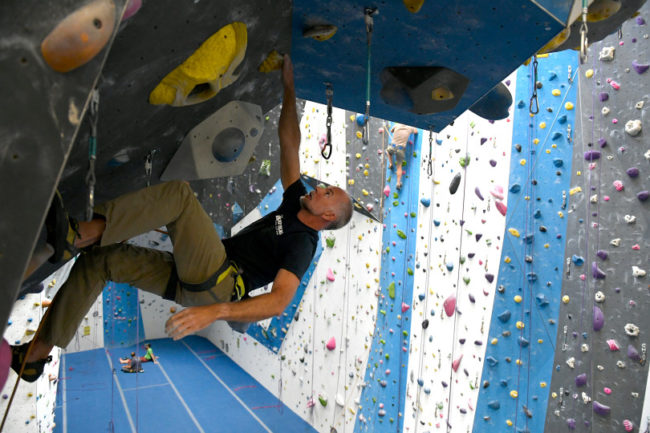
Friends, I want you to be among the first to know that I have retired from Earth Treks and sold the remainder of my ownership. With a new leadership team firmly in place, it is the ideal time for me to quietly slip away. Retirement doesn’t mean that the adventure is over. In the coming months I will be climbing (Antarctica in December), biking and skiing as much as possible (I am not going to waste the chance of getting after it, while my body is still capable). The calendar is already loaded up with keynotes and leadership workshops and the entrepreneurial bug will always make my skin itch. In fact, I’ve already made some investments in outdoor brands and imagine that someday I will run another consumer facing company. Nearly thirty years ago I left Outward Bound to start Earth Treks. Traveling full circle, I am now on the Board of Directors of the Colorado Outward Bound School: hoping to inspire the staff and serve the students in the same way that my five day outdoor adventure, at age 15, kicked my ass into gear. The deepest satisfaction that I had teaching in the outdoors and running Earth Treks was helping staff and students grow toward their potential. I am grateful that so many people trusted me to guide them on that journey. Earning and honoring that trust is the greatest reward I’ve had. “Don’t reach the peak, but miss the point.” I’ve used this quote to keep me focused on what is truly important in this often confusing, fast paced, summit at all costs, world. Hopefully that simple saying will guide you, too, as you are out there crushing it. Thanks for your friendship,Earth Treks, along with it’s brand partner Planet Granite is the largest climbing gym company in the United States. Earth Treks also opened the country’s largest climbing gym in a Denver suburb earlier this year.
Earth Treks And Planet Granite Announce Parent Company
 Earth Treks Climbing and Fitness and Planet Granite Climbing, Yoga and Fitness announced the change of their corporate name to El Cap Holdings, LLC.
The company said the new name embraces both brands and pays homage to an iconic feature in Yosemite National Park. El Capitan is at the top of many climbers wish list – it is the ultimate success that people set a long-term goal to work towards. Those who climb El Capitan possess an extreme focus on partnership, strategy and continual growth. Thus, a fitting aspirational name for climbing gyms that are built by teams who are continually looking for and planning the next big adventure.
“Our guests will continue to see Earth Treks and Planet Granite gyms,” explains El Cap CEO, Robert Cohen. “El Cap simply provides a north star and structure for the teams that collaboratively support all of the gyms. Businesses who work with directly with our retail, finance, marketing and human resources team will now work with El Cap.”
The creation of a parent brand follows the announcement of the merger between Earth Treks and Planet Granite last November. The merger created the largest climbing gym network in the United States. The combined company offers 11 gyms in 5 regions with more than 1,000 employees who serve more than two million customers annually. Tengram Capital Partners, a private equity firm that specializes in consumer brands, backed the merger. Tengram partnered initially with Earth Treks in April 2017.
Earth Treks Climbing and Fitness and Planet Granite Climbing, Yoga and Fitness announced the change of their corporate name to El Cap Holdings, LLC.
The company said the new name embraces both brands and pays homage to an iconic feature in Yosemite National Park. El Capitan is at the top of many climbers wish list – it is the ultimate success that people set a long-term goal to work towards. Those who climb El Capitan possess an extreme focus on partnership, strategy and continual growth. Thus, a fitting aspirational name for climbing gyms that are built by teams who are continually looking for and planning the next big adventure.
“Our guests will continue to see Earth Treks and Planet Granite gyms,” explains El Cap CEO, Robert Cohen. “El Cap simply provides a north star and structure for the teams that collaboratively support all of the gyms. Businesses who work with directly with our retail, finance, marketing and human resources team will now work with El Cap.”
The creation of a parent brand follows the announcement of the merger between Earth Treks and Planet Granite last November. The merger created the largest climbing gym network in the United States. The combined company offers 11 gyms in 5 regions with more than 1,000 employees who serve more than two million customers annually. Tengram Capital Partners, a private equity firm that specializes in consumer brands, backed the merger. Tengram partnered initially with Earth Treks in April 2017. Movement RiNO: Intentional Design by Entre-Prises
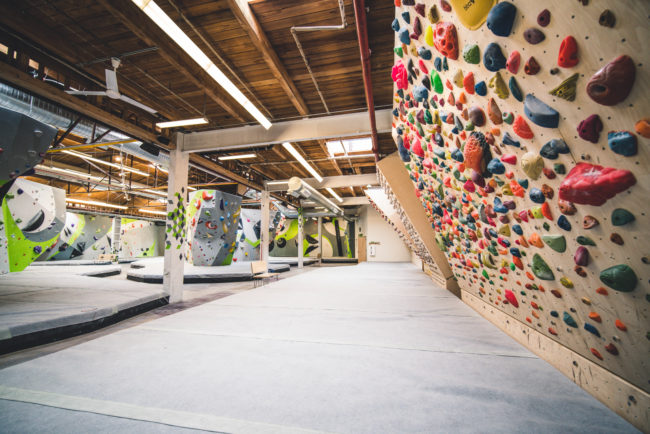
When you walk into Movement Climbing + Fitness’s new all-bouldering facility in the River North (RiNO) district in Denver, the first thing you will see is a field of free-standing boulders inviting you to top them out. Skylights in the factory-style ceiling illuminate gray and lime green Entre-Prises walls that are littered with brightly colored hand holds and enticing problems. What you may not notice at first glance is that different parts of the gym are designed specifically for different styles of climbing.
Not Your Average Climbing Gym
The River North district of Denver used to be an industrial sector, but in recent years has been reinvented as an arts district. Movement Climbing + Fitness’s new RiNO facility is located in a building that used to house a tin factory in the 1950s. “Its this big brick building with a beautiful steel truss ceiling. It’s just a gorgeous spot that’s been a run-down building for quite some time,” said Ryan Sewell, Movement’s strategy manager and director of route setting. “What we decided to do was come into this space and instead of just knocking it down or trying to work against the old architecture, we worked really hard to make the climbing walls and the experience really fit with the building.” However, Movement Climbing + Fitness only takes up about 39,000 square feet of this 50,000 square foot building. The rest of the space is occupied by Improper City, a multi-faceted company that features a coffee shop that roasts its own beans; a bar with 36 taps serving local beer, wine, and cider; a food truck park and patio; and a co-working space complete with public Wi-fi and a phone booth.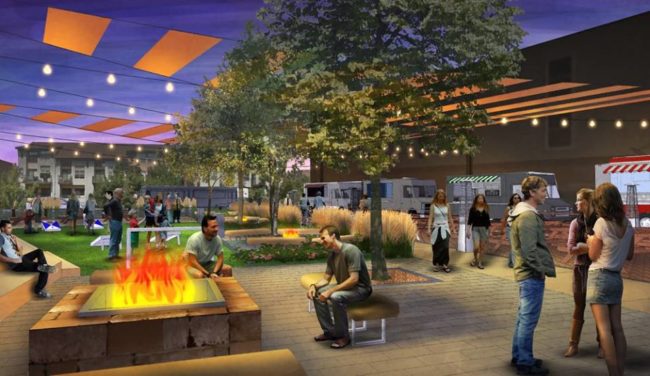
Collaborative Design Process
When Ryan Sewell began to think about the layout for the new gym, he had some distinct ideas about how he wanted climbers to interact with the routes. He wrote up a nine page report detailing his ideas and sent it over to Grant Ortman, the wall designer at Entre-Prises. “I worked with Entre-Prises from the very beginning of the climbing wall design to make sure that everything in the space was intentional and that every angle and every wall was geared toward a certain type of experience,” Sewell said.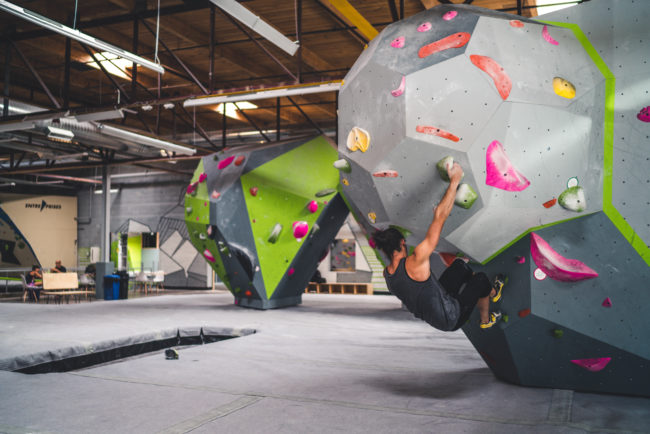
Six Setting Styles
Sewell and Ortman’s plan for the Movement RiNO facility included six different areas, all set in a different style. The first feature that a climber encounters when they walk into the gym is the Field. This area includes free-standing boulders that can be topped out. Many of the routes on these boulders are beginner-friendly, though there are plenty of high level problems as well. “The Field is geared towards the idea of someone experiencing climbing for the first time, and what better way then to climb up something and stand on top of a boulder? It gives that feeling of winning, of ‘I conquered this thing,’” Sewell explained. His hope is that this experience will encourage people to return and climb again.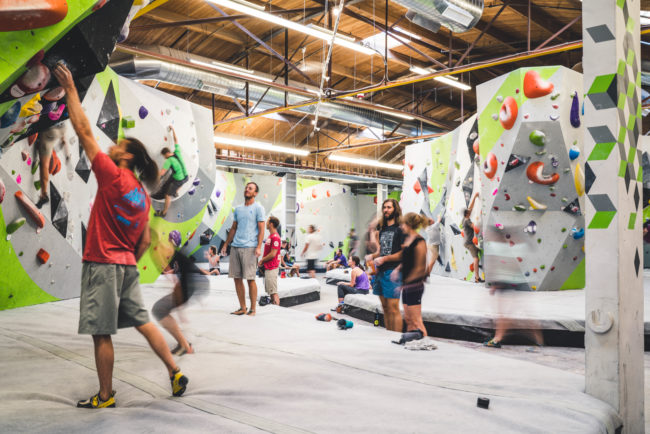
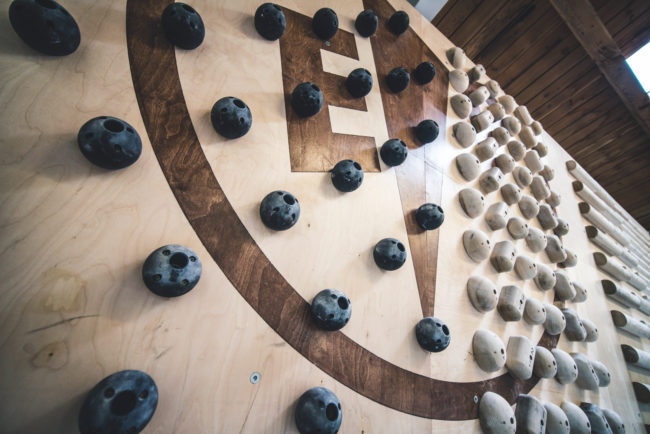
Invitation to Experience Something New
Theses six sections of the gym are set in different styles, but are designed to create a collaborative, interactive experience. The areas are positioned in such a way so that people are likely to have a chance encounter with other climbers or different types of problems, and they will be encouraged to try something new or something more difficult than they would have otherwise tried. Someone can be traversing across Brown Town and see a cool feature in the Field and walk over there to try it. Or a climber can be the North or South Valley boulder and see someone try a difficult move on the World Cup Wall and be enticed to join them. “Working with Entre-Prises enabled us to build the walls with intention,” Sewell said. The thoughtful design of Movement’s RiNO facility—from fitting a full-service gym within the existing architecture of a tin factory, to the concept of six different climbing areas, to sharing the space with a coffee shop and bar—create a completely fresh and well-integrated experience for visitors.This story was paid for and produced by the sponsor and does not necessarily represent the views of the Climbing Business Journal editorial team.
Indy To Get New Bouldering Gym
